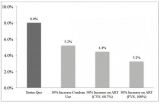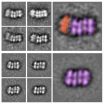Discovery of a new mechanism that can lead to blindness
IRCM researchers uncover the important role of a protein found in visual cells
2014-10-15
(Press-News.org) Montréal, October 15, 2014 – An important scientific breakthrough by a team of IRCM researchers led by Michel Cayouette, PhD, is being published today by The Journal of Neuroscience. The Montréal scientists discovered that a protein found in the retina plays an essential role in the function and survival of light-sensing cells that are required for vision. These findings could have a significant impact on our understanding of retinal degenerative diseases that cause blindness.
The researchers studied a process called compartmentalization, which establishes and maintains different compartments within a cell, each containing a specific set of proteins. This process is crucial for neurons (nerve cells) to function properly.
"Compartments within a cell are much like different parts of a car," explains Vasanth Ramamurthy, PhD, first author of the study. "In the same way that gas must be in the fuel tank in order to power the car's engine, proteins need to be in a specific compartment to properly exercise their functions."
A good example of compartmentalization is observed in a specialized type of light-sensing neurons found in the retina, the photoreceptors, which are made up of different compartments containing specific proteins essential for vision.
"We wanted to understand how compartmentalization is achieved within photoreceptor cells," says Dr. Cayouette, Director of the Cellular Neurobiology research unit at the IRCM. "Our work identified a new mechanism that explains this process. More specifically, we found that a protein called Numb functions like a traffic controller to direct proteins to the appropriate compartments."
"We demonstrated that in the absence of Numb, photoreceptors are unable to send a molecule essential for vision to the correct compartment, which causes the cells to progressively degenerate and ultimately die," adds Dr. Ramamurthy, who carried out the project in Dr. Cayouette's laboratory in collaboration with Christine Jolicoeur, research assistant. "This is important because the death of photoreceptor cells is known to cause retinal degenerative diseases in humans that lead to blindness. Our work therefore provides a new piece of the puzzle to help us better understand how and why the cells die."
"We believe our results could eventually have a substantial impact on the development of treatments for retinal degenerative diseases, like retinitis pigmentosa and Leber's congenital amaurosis, by providing novel drug targets to prevent photoreceptor degeneration," concludes Dr. Cayouette.
According to the Foundation Fighting Blindness Canada, millions of people in North America live with varying degrees of irreversible vision loss because they have an untreatable, degenerative eye disorder that affects the retina. Research aiming to better understand what causes vision loss could lead to preserving and restoring sight.
INFORMATION:
About the research project
This research project was funded by grants from the Canadian Institutes of Health Research, the Foundation Fighting Blindness Canada and the Fonds de recherche du Québec – Santé. The project was conducted at the IRCM by Vasanth Ramamurthy, Christine Jolicoeur, Demetra Koutroumbas and Michel Cayouette, in collaboration with researchers in the United States and Germany.
For more information, please refer to the article summary published online by The Journal of Neuroscience: http://www.jneurosci.org/content/34/42/13976.short.
About Michel Cayouette
Michel Cayouette obtained a PhD in neurobiology from Université Laval. He is Associate IRCM Research Professor and Director of the Cellular Neurobiology research unit. Dr. Cayouette is an Associate Research Professor in the Department of Medicine at Université de Montréal. He is also Adjunct Professor in the Department of Medicine (Division of Experimental Medicine) and in the Department of Anatomy and Cell Biology at McGill University. He is Chair of the Scientific Advisory Board for the Foundation Fighting Blindness Canada, as well as a member of the Vision Research Network (Fonds de recherche du Québec – Santé) and the Centre of Excellence in Neuroscience of Université de Montréal. Dr. Cayouette is a Senior Research Scholar from the Fonds de recherche du Québec – Santé. For more information, visit http://www.ircm.qc.ca/cayouette.
About the IRCM
The IRCM is a renowned biomedical research institute located in the heart of Montréal's university district. Founded in 1967, it is currently comprised of 35 research units and four specialized research clinics (cholesterol, cystic fibrosis, diabetes and obesity, hypertension). The IRCM is affiliated with the Université de Montréal, and the IRCM Clinic is associated to the Centre hospitalier de l'Université de Montréal (CHUM). It also maintains a long-standing association with McGill University. The IRCM is funded by the Quebec ministry of Economy, Innovation and Export Trade (Ministère de l'Économie, de l'Innovation et des Exportations).
ELSE PRESS RELEASES FROM THIS DATE:
2014-10-15
Do you believe in science? Your faith in science may actually make you more likely to trust information that appears scientific but really doesn't tell you much. According to a new Cornell Food and Brand Lab study, published in Public Understanding of Science, trivial elements such as graphs or formulas can lead consumers to believe products are more effective. "Anything that looks scientific can make information you read a lot more convincing," says the study's lead author Aner Tal, PhD, "The scientific halo of graphs, formulas, and other trivial elements that look scientific ...
2014-10-15
During the 1930s, North America endured the Dust Bowl, a prolonged era of dryness that withered crops and dramatically altered where the population settled. Land-based precipitation records from the years leading up to the Dust Bowl are consistent with the telltale drying-out period associated with a persistent dry weather pattern, but they can't explain why the drought was so pronounced and long-lasting.
The mystery lies in the fact that land-based precipitation tells only part of the climate story. Building accurate computer reconstructions of historical global precipitation ...
2014-10-15
Our mood can affect how we walk — slump-shouldered if we're sad, bouncing along if we're happy. Now researchers have shown it works the other way too — making people imitate a happy or sad way of walking actually affects their mood.
Subjects who were prompted to walk in a more depressed style, with less arm movement and their shoulders rolled forward, experienced worse moods than those who were induced to walk in a happier style, according to the study published in the Journal of Behavior Therapy and Experimental Psychiatry.
CIFAR Senior Fellow Nikolaus ...
2014-10-15
Rochester, Minn. – The American Academy of Neurology (AAN) and the American Association of Neuromuscular & Electrodiagnostic Medicine (AANEM) offer a new guideline on how to determine what genetic tests may best diagnose a person's subtype of limb-girdle or distal muscular dystrophy. The guideline is published in the October 14, 2014, print issue of Neurology®, the medical journal of the AAN.
Researchers reviewed all of the available studies on the muscular dystrophy, a group of genetic diseases in which muscle fibers are unusually susceptible to damage, as ...
2014-10-15
COLUMBIA, Mo. – According to the Centers for Disease Control and Prevention (CDC), many teens skip breakfast, which increases their likelihood of overeating and eventual weight gain. Statistics show that the number of adolescents struggling with obesity, which elevates the risk for chronic health problems, has quadrupled in the past three decades. Now, MU researchers have found that eating breakfast, particularly meals rich in protein, increases young adults' levels of a brain chemical associated with feelings of reward, which may reduce food cravings and overeating ...
2014-10-15
PROVIDENCE, R.I. [Brown University] — To address the HIV epidemic in Mexico is to address it among men who have sex with men (MSM), because they account for a large percentage of the country's new infections, says Omar Galárraga, assistant professor of health services policy and practice in the Brown University School of Public Health.
A major source of the new infections is Mexico City's male-to-male sex trade, Galárraga has found. In his research, including detailed interviews and testing with hundreds of male sex workers on the city's streets and in ...
2014-10-15
Coordinating product placement with advertising in the same television program can reduce audience loss over commercial breaks by 10%, according to a new study in the Articles in Advance section of Marketing Science, a journal of the Institute for Operations Research and the Management Sciences (INFORMS).
Synergy or Interference: The Effect of Product Placement on Commercial Break Audience Decline is by David A. Schweidel, Associate Professor of Marketing at Goizueta Business School, Emory University, Natasha Zhang Foutz, Assistant Professor of Marketing at McIntire School ...
2014-10-15
UPTON, NY—The proteins that drive DNA replication—the force behind cellular growth and reproduction—are some of the most complex machines on Earth. The multistep replication process involves hundreds of atomic-scale moving parts that rapidly interact and transform. Mapping that dense molecular machinery is one of the most promising and challenging frontiers in medicine and biology.
Now, scientists have pinpointed crucial steps in the beginning of the replication process, including surprising structural details about the enzyme that "unzips" and splits ...
2014-10-15
OAK RIDGE, Tenn., Oct. 15, 2014—Researchers at the Department of Energy's Oak Ridge National Laboratory have demonstrated an additive manufacturing method to control the structure and properties of metal components with precision unmatched by conventional manufacturing processes.
Ryan Dehoff, staff scientist and metal additive manufacturing lead at the Department of Energy's Manufacturing Demonstration Facility at ORNL, presented the research this week in an invited presentation at the Materials Science & Technology 2014 conference in Pittsburgh.
"We can now ...
2014-10-15
October 15, 2014 – A recently concluded demonstration project made meaningful progress toward introducing a "patient-centered medical home" approach at "safety net" practices serving vulnerable and underserved populations. Lessons learned in the course of developing and implementing the Safety Net Medical Home Initiative (SNMHI) are featured in a special November supplement to Medical Care. The journal is published by Lippincott Williams & Wilkins, a part of Wolters Kluwer Health.
The supplement presents nine original papers sharing "experience and learning" from ...
LAST 30 PRESS RELEASES:
[Press-News.org] Discovery of a new mechanism that can lead to blindness
IRCM researchers uncover the important role of a protein found in visual cells



